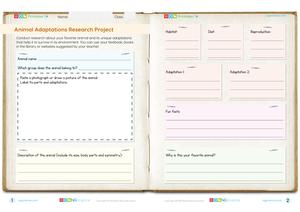Begin the lesson by discussing the concept of living in groups as a behavioral adaptation. Highlight how this strategy improves survival chances for animals.
Go to the LessonLearning Objectives
- Understand how living in groups is a behavioral adaptation that improves animal survival.
- Explain how emperor penguins use group living to conserve heat and protect against harsh weather.
- Describe the advantages of pack hunting and how it increases the chances of capturing prey.
- Identify the benefits of group living in terms of protection against predators and raising young.
- Recognize the role of social interaction in learning survival skills among young animals in groups.
Introduction and Hook
Direct Instruction
Explain how emperor penguins use group living to conserve heat and protect against harsh weather conditions in the Antarctic.
Discuss the concept of pack hunting and how it increases the chances of capturing prey. Use examples of lions and wolves to illustrate this behavior.
Guided Exploration
Watch 'The Great Wildebeest Migration' video to understand the benefits of migrating in groups, such as increased survival rates against predators.
Facilitate a discussion on the advantages of group living in terms of protection against predators and raising young, using elephants and baboons as examples.
Hands-On Activity
Conduct a group activity where students simulate animal group behaviors, such as huddling like penguins or forming a pack like wolves.
Independent Practice
Assign students to write a short essay on how living in groups benefits a specific animal species, focusing on survival strategies.
Check for Understanding
Conduct a class discussion to review key concepts, asking students to share what they learned about the advantages of living in groups.
Use questioning techniques to assess students' understanding of how social interaction in groups aids in learning survival skills.
Review and Reflection
Encourage students to reflect on how living in groups might be beneficial for humans, drawing parallels to animal behaviors.
Review the lesson's learning objectives and have students self-assess their understanding of each objective.
Assessment and Extension
Administer the 'Review – Plant and Animal Adaptations' assessment to evaluate overall understanding of the unit.
Try the QuizEncourage students to explore further by researching other animal adaptations beyond group living, such as migration or hibernation.





